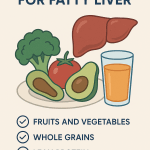This article is for informational purposes only and is not a substitute for professional medical advice.
Understanding Diabetes and Its Management
Diabetes is a chronic condition that affects how your body processes glucose, a vital source of energy. There are two primary types: Type 1 diabetes, where the body produces little or no insulin, and Type 2 diabetes, which is characterized by insulin resistance. Managing diabetes is crucial for preventing complications such as heart disease, kidney damage, and nerve issues. The pathophysiology of diabetes involves complex interactions between genetic, environmental, and lifestyle factors, leading to impaired glucose metabolism and elevated blood sugar levels. In Type 2 diabetes, for instance, the body’s cells become less responsive to insulin, making it harder for glucose to enter the cells and causing elevated blood sugar levels. Over time, this can lead to serious health complications, including cardiovascular disease and neuropathy. (PubMed)
The Role of Diet in Diabetes Management
Your diet plays a pivotal role in managing diabetes. By making informed food choices, you can help maintain stable blood sugar levels and reduce the risk of complications. A well-planned diet can also improve insulin sensitivity, which is particularly important for those with Type 2 diabetes. It’s essential to understand that while diet is a powerful tool, it should be part of a comprehensive management plan that includes regular monitoring and healthcare support.
1. Focus on Whole Foods
Whole foods, such as fruits, vegetables, whole grains, lean proteins, and healthy fats, should form the foundation of your meals. These foods are nutrient-dense and help maintain energy levels without causing significant spikes in blood sugar. The glycemic index (GI) is a useful tool to consider; it ranks foods based on how they affect blood sugar levels. Foods with a low GI can help keep blood glucose levels stable. For example, swapping out white bread for whole grain can make a significant difference in your blood sugar response.
Examples of Healthy Choices:
- Vegetables: Spinach, broccoli, and carrots
- Fruits: Berries, apples, and oranges
- Whole Grains: Quinoa, brown rice, and oats
- Proteins: Chicken, fish, beans, and legumes
- Healthy Fats: Avocado, nuts, and olive oil
2. Carbohydrate Counting
Understanding carbohydrates is essential for managing diabetes. Carbs have the most significant impact on blood sugar levels. Aim to balance your carbohydrate intake throughout the day. For instance, if you consume a higher carbohydrate meal, consider adjusting your next meal to include fewer carbs. This approach helps to avoid spikes in blood sugar levels. It’s beneficial to work with a dietitian to develop a carbohydrate counting plan tailored to your lifestyle.
How to Count Carbs:
- Read nutrition labels to track carb content.
- Use measuring cups or a food scale to portion your meals.
- Plan meals ahead to avoid last-minute choices that may lead to overeating.
3. Portion Control
Portion control is vital in preventing overeating and maintaining a healthy weight. Using smaller plates, measuring servings, and being mindful of hunger cues can help manage portions effectively. Consider the “plate method”—filling half your plate with non-starchy vegetables, a quarter with lean protein, and a quarter with whole grains. This visual guide can simplify meal planning and help you maintain balanced nutrition.
Exercise: A Key Component of Diabetes Management
Regular physical activity is crucial for everyone, especially those with diabetes. Exercise helps improve insulin sensitivity, lowers blood sugar levels, and supports weight management. Engaging in both aerobic and resistance training can provide significant benefits, as they work through different mechanisms to enhance glucose uptake by muscles. Aerobic exercise increases heart rate and promotes cardiovascular health, while strength training builds muscle mass, which is metabolically active and helps in glucose utilization.
1. Types of Exercise
Incorporate a mix of aerobic and strength-training exercises into your routine. Each type of exercise offers unique benefits for blood sugar control.
Aerobic Activities:
- Walking, jogging, or cycling
- Swimming or dancing
- Group fitness classes
Strength Training:
- Bodyweight exercises (push-ups, squats)
- Resistance bands
- Weight lifting
2. Setting Realistic Goals
Start with achievable goals, such as walking for 30 minutes a day, five days a week. Gradually increase intensity and duration as your fitness improves. Consider using a fitness tracker to monitor your progress and stay motivated. Setting specific, measurable, achievable, relevant, and time-bound (SMART) goals can help you stay focused and committed.
3. Monitoring Your Progress
Keep track of your physical activity and blood sugar levels. This can help you identify patterns and adjust your routine as needed. Consider using apps or journals for this purpose. Regularly reviewing your progress can also boost your confidence and commitment to your diabetes management plan. Don’t hesitate to celebrate small victories along the way!
Integrating Diet and Exercise
Combining a balanced diet with regular exercise can significantly enhance your diabetes management. Here are some practical tips to help you integrate both:
1. Meal Planning
Plan your meals and snacks around your exercise routine. For instance, consuming a small snack with carbohydrates and protein before exercising can provide the energy needed for a workout. Post-exercise, refueling with a balanced meal can aid recovery and maintain stable blood sugar levels. Consider meals that include a mix of protein and complex carbohydrates, such as a turkey sandwich on whole-grain bread with a side of fruit.
2. Hydration
Stay hydrated, especially during physical activity. Water is the best choice, but you can also include herbal teas or infused water for variety. Dehydration can lead to increased blood sugar levels, so ensure you’re drinking enough fluids throughout the day. Aim for at least 8 cups of water daily, adjusting based on activity level and climate.
3. Seek Support
Consider working with a dietitian or a diabetes educator. They can provide personalized advice and guidance tailored to your needs. Joining a support group can also be beneficial, as sharing experiences with others can offer motivation and practical tips. Engaging with a community can make your journey more enjoyable and less isolating.
Myth vs. Fact
- Myth: People with diabetes can’t eat sugar at all.
- Fact: People with diabetes can enjoy sugar in moderation. The key is to balance it with other nutrients.
- Myth: Exercise is only beneficial if done intensely.
- Fact: Any physical activity, even light walking, can be beneficial for blood sugar control.
- Myth: Carbohydrates are off-limits for people with diabetes.
- Fact: Carbohydrates are essential; the focus should be on the type and quantity consumed.
- Myth: You need to follow a strict diet to manage diabetes.
- Fact: Flexibility in your diet, with mindful choices, can lead to successful management.
Patient Vignette
Meet Sarah, a 45-year-old woman diagnosed with Type 2 diabetes. After struggling with her weight and blood sugar levels, she decided to make a change. By focusing on whole foods and incorporating regular exercise into her routine, she lost 20 pounds and significantly improved her blood sugar control. Sarah now enjoys cooking healthy meals and takes daily walks, feeling more energetic than ever. Her journey illustrates that with the right approach, managing diabetes is achievable. Sarah emphasizes that the support of her healthcare team, along with her family, was crucial in her success.
Frequently Asked Questions
1. Can I eat carbohydrates if I have diabetes?
Yes, carbohydrates are an essential part of a balanced diet. Focus on complex carbohydrates and monitor portion sizes to manage blood sugar levels effectively. Consider pairing carbs with proteins or fats to slow digestion and prevent spikes in blood sugar.
2. How often should I exercise if I have diabetes?
Aim for at least 150 minutes of moderate aerobic activity each week, along with strength training exercises at least twice a week. Consistency is key—find activities you enjoy to make it easier to stick with your routine.
3. What types of foods should I avoid?
Limit processed foods high in sugar and refined carbohydrates, such as sugary drinks, white bread, and pastries. Instead, opt for whole food alternatives that provide essential nutrients without the added sugars.
4. How can I lower my blood sugar levels quickly?
Engaging in physical activity, drinking water, and consuming a small amount of protein can help lower blood sugar levels quickly. However, if your blood sugar is extremely high, consult your healthcare provider for specific guidance.
5. Is it safe to exercise with diabetes?
Yes, exercise is safe and beneficial for most people with diabetes. However, consult your healthcare provider before starting a new exercise program, especially if you have other health conditions. They can help you determine a safe and effective exercise plan tailored to your needs.
Key Takeaways
- Balanced diet and regular exercise are crucial for diabetes management.
- Focus on whole foods and monitor carbohydrate intake.
- Incorporate both aerobic and strength-training exercises into your routine.
- Set realistic fitness goals and track your progress.
- Stay hydrated and plan meals around your exercise schedule.
References
- American Diabetes Association. (2023). Standards of Medical Care in Diabetes.
- Centers for Disease Control and Prevention (CDC). (2023). Diabetes Basics.
- World Health Organization (WHO). (2023). Diabetes.
- National Health Service (NHS). (2023). Diabetes: Nutrition and Diet.
- PubMed. (2023). The Role of Diet in Diabetes Management.
- UpToDate. (2023). Exercise in Patients with Diabetes.








Post a comment